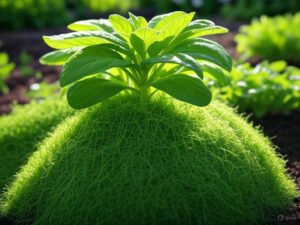
Is Coco Peat Better Than Soil?
Is Coco Peat Better Than Soil? The Ultimate Comparison
In the world of gardening and plant cultivation, the choice of growing medium can significantly impact plant health, growth rates, and overall gardening success. Among the various options available today, coco peat (also known as coir or coconut coir) has gained remarkable popularity as an alternative to traditional soil. But is coco peat genuinely better than soil? We’ll explore this question thoroughly, examining the properties, advantages, limitations, and ideal applications of both growing mediums to help you make an informed decision for your gardening needs.
Understanding Coco Peat: Nature’s Sustainable Alternative
Coco peat is a natural fiber extracted from coconut husks, specifically the mesocarp or middle layer of coconuts. After the extraction of long fibers for products like mats and brushes, the remaining short fibers and pith undergo a specialized processing method that transforms them into a versatile growing medium. This process involves removing salt content and treating the material to achieve optimal growing conditions for plants.
The production of coco peat offers significant environmental benefits:
- It utilizes a by-product of the coconut industry that would otherwise be waste
- Its production requires minimal chemical inputs
- It’s biodegradable and renewable
- It helps reduce peat moss harvesting from fragile bog ecosystems
The resulting product is a light-brown, fibrous material with exceptional water retention capabilities and structural integrity that makes it increasingly popular among both commercial growers and home gardeners.
Traditional Soil: The Time-Tested Foundation of Plant Growth
Soil, in contrast, is a complex natural resource formed over centuries through the weathering of rocks and the decomposition of organic matter. Natural soil comprises minerals, organic components, water, air, and numerous microorganisms that create a living ecosystem. High-quality garden soil typically contains:
- Clay particles that hold moisture and nutrients
- Sand for improved drainage
- Silt for intermediate properties between clay and sand
- Organic matter that feeds soil microorganisms and provides nutrients
- A thriving microbial ecosystem that supports plant health
The specific composition varies widely based on geographical location, climate, and local vegetation patterns, creating distinct soil types with unique properties.
The Comprehensive Comparison: Coco Peat vs. Soil

1. Water Retention and Drainage Properties
Coco peat excels in water management with remarkable absorption capacity—it can hold up to 10 times its weight in water. This exceptional water retention is balanced with excellent drainage characteristics, creating an ideal moisture environment for most plants. The fibrous structure prevents compaction even when saturated, maintaining crucial air pockets for root respiration.
Traditional soil, depending on its composition, often struggles to achieve this balance. Clay-heavy soils retain water excellently but may become waterlogged and compacted. Sandy soils drain efficiently but dry out quickly, requiring frequent watering. Achieving the perfect balance in soil often requires considerable amendments and ongoing maintenance.
Advantage: Coco peat for its superior water management that reduces both overwatering and underwatering risks.
2. Nutrient Content and Management
Soil naturally contains various minerals and nutrients essential for plant growth. Well-developed garden soil harbors beneficial microorganisms that help decompose organic matter, fix nitrogen, and make nutrients available to plants. This built-in fertility provides a natural foundation for plant nutrition.
Coco peat contains minimal nutrients on its own. While this might seem disadvantageous, it actually offers precise control over plant nutrition through fertilization. Growers can tailor nutrient solutions exactly to their plants’ needs without worrying about existing soil chemistry. However, coco peat has a tendency to bind calcium and magnesium, requiring specially formulated fertilizers to compensate.
Advantage: Situational – Soil benefits plants that thrive with minimal intervention, while coco peat suits precision growing where complete nutritional control is desired.
3. pH Levels and Stability
Coco peat typically has a pH range of 5.5-6.8, which is slightly acidic to neutral—ideal for most plants. This pH remains relatively stable over time, requiring minimal adjustment. The buffering capacity of high-quality coco peat helps maintain this stability even as nutrients are added.
Soil pH varies tremendously based on geographical location, parent material, and previous land use. It can range from highly acidic (below 5.0) to strongly alkaline (above 8.0). Managing soil pH often requires regular testing and amendments like lime or sulfur.
Advantage: Coco peat for its consistent and plant-friendly pH range that requires less monitoring and adjustment.
4. Pest and Disease Management
Coco peat undergoes processing that effectively eliminates most pests, diseases, and weed seeds. This creates a clean growing environment, reducing the need for preventative treatments. The resistance to compaction also helps prevent root diseases associated with poor aeration.
Soil naturally harbors numerous organisms, including potential pathogens and pest eggs. While beneficial organisms help suppress some issues, garden soil can introduce unexpected problems to container plants or indoor gardens. Sterilizing soil is possible but eliminates beneficial organisms along with harmful ones.
Advantage: Coco peat for starting with a clean slate, particularly important for seedlings, cuttings, and indoor growing.
5. Environmental Impact and Sustainability
Coco peat utilizes agricultural by-products that would otherwise be waste. Its production helps support coconut farming communities while providing an alternative to peat moss, which is harvested from ecologically important peat bogs. However, transportation energy costs can be significant when coconut-producing regions are distant.
Soil may be locally available, minimizing transportation impacts. However, commercial potting soils often contain peat moss harvested from bogs, which are crucial carbon sinks and specialized ecosystems. Soil mining for horticultural purposes can also disrupt natural landscapes.
Advantage: Mixed – Coco peat’s sustainability depends on production methods and transportation distance, while soil’s impact varies based on sourcing and composition.
6. Weight and Practical Considerations
Coco peat is remarkably lightweight, especially when dry, making it ideal for container gardening, hanging baskets, rooftop gardens, and situations where weight is a concern. It’s also clean to handle and doesn’t stain like soil.
Soil is significantly heavier, which provides stability for larger plants but creates challenges for movable containers and weight-restricted areas. It can also be messier to work with, especially indoors.
Advantage: Coco peat for applications where weight and cleanliness matter.
Ideal Applications: When to Choose Each Medium
When Coco Peat Excels:
- Hydroponics and soilless systems: The structural stability and excellent aeration make coco peat perfect for modern growing systems.
- Container gardening: Lightweight nature and resistance to compaction benefit potted plants.
- Seed starting and propagation: Clean, pathogen-free environment supports vulnerable young plants.
- Indoor growing: Cleanliness and minimal pest issues suit houseplant cultivation.
- Plants preferring consistent moisture: Drought-sensitive species thrive with coco peat’s water management.
When Traditional Soil Shines:
- Established garden beds: Diverse microbial life supports long-term ecosystem health.
- Native plant gardening: Local soil often best supports indigenous species adapted to it.
- Low-maintenance growing: Soil’s natural nutrient cycling requires less frequent fertilization.
- Heavy feeders with specific soil preferences: Some vegetables and flowering plants have evolved for specific soil conditions.
- Budget-conscious projects: Soil is often less expensive, especially for large-scale applications.
Best Practices for Using Coco Peat
To maximize the benefits of coco peat in your gardening endeavors:
- Properly hydrate dry coco peat before use to overcome its initial water-repellent properties.
- Use coco-specific fertilizers that compensate for calcium and magnesium binding.
- Consider blending with components like perlite or vermiculite for specialized needs.
- Monitor EC levels (electrical conductivity) to prevent salt buildup, especially in containers.
- Reuse thoughtfully – coco peat can be reused for multiple growing cycles after proper cleaning and sterilization.
Conclusion: Making the Right Choice for Your Plants
The question “Is coco peat better than soil?” doesn’t have a universal answer. Rather than viewing them as competitors, we see these growing mediums as specialized tools in the gardener’s arsenal, each with optimal applications.
Coco peat offers tremendous advantages in controlled environments, container growing, and situations requiring precise management of water and nutrients. Its renewable nature and consistent performance make it an excellent choice for many modern gardening approaches.
Traditional soil provides irreplaceable benefits through its complex ecosystem and natural nutrient cycling that support holistic plant health. For many outdoor gardens and native plantings, well-maintained soil remains the gold standard.
The most successful growers understand the strengths and limitations of each medium, often using them in combination or selecting based on specific plant requirements and growing conditions. By matching the medium to your particular gardening goals, plant selection, and growing environment, you can achieve optimal results whether using coco peat, traditional soil, or customized blends of growing media.



